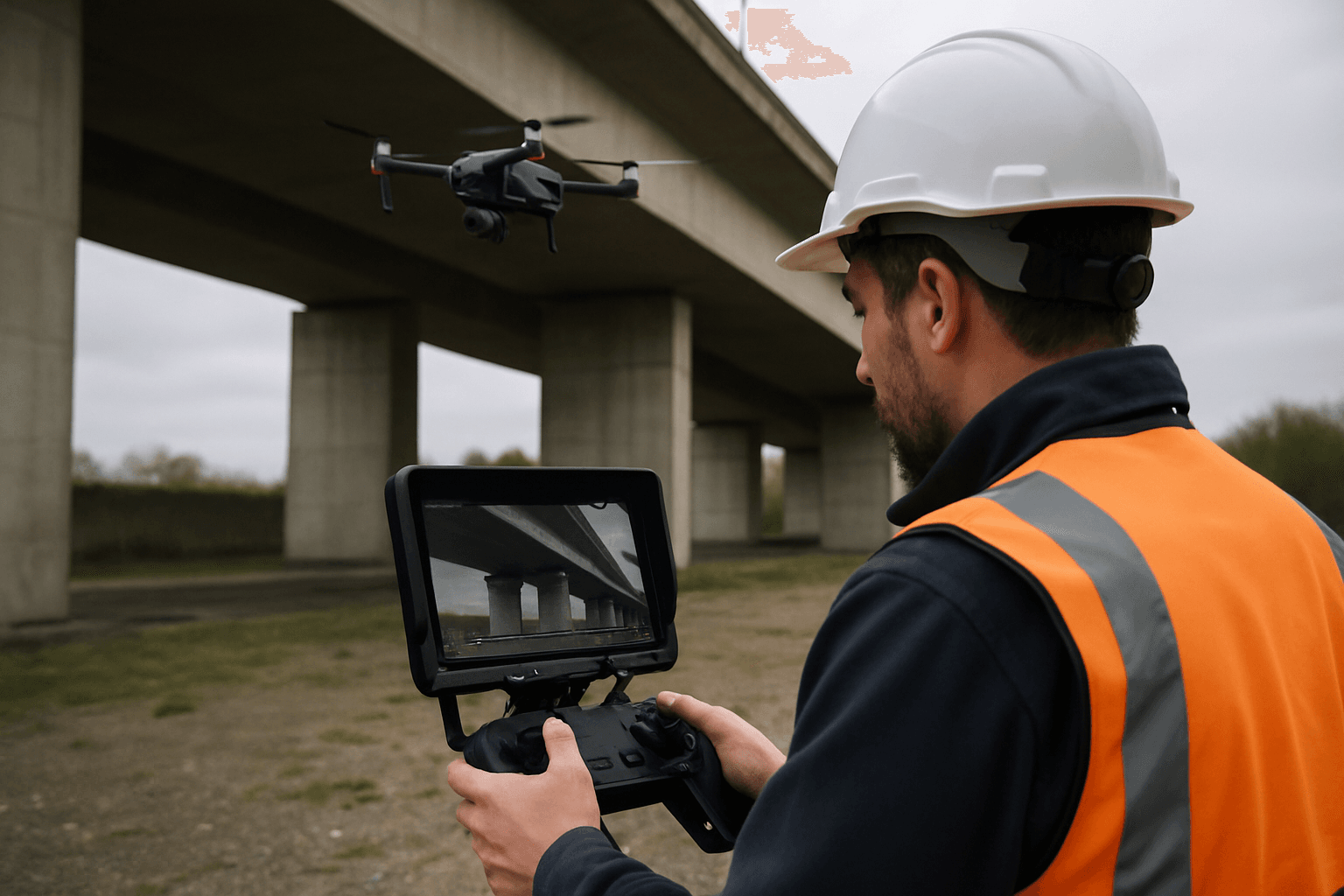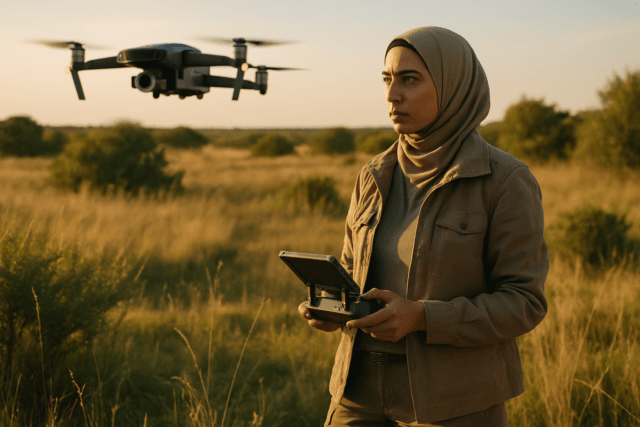Drones have emerged as a transformative technology, offering significant cost savings and increased efficiency across various sectors. From agriculture to construction, logistics to infrastructure inspection, the adoption of drone technology is proving to be a game-changer for businesses and public sector organisations seeking to optimise their operations and reduce expenses in the UK and beyond. This article delves into the myriad ways drones are driving cost savings, highlighting real-world examples and potential future advancements.
The UK Drone Revolution: A Bird’s-Eye View of Cost Efficiency
The UK government recognises the vast potential of drones, estimating that the drone sector could contribute up to £45 billion to the UK economy by 2030. This includes a staggering £22 billion in net cost savings. With over 900,000 drones expected to operate in UK skies by 2030, the impact on various industries will be profound.
Key Benefits of Drone Technology
Drones offer public and private organisations the opportunity to carry out tasks faster, safer, cheaper, and with less environmental impact than traditional methods. Here’s a breakdown of the key advantages:
- Reduced Operational Costs: Drones can significantly lower operational costs by reducing reliance on fuel-powered vehicles, human labour, and expensive equipment like scaffolding.
- Increased Efficiency: Drones can accomplish tasks up to 400 times faster than traditional methods, leading to significant time savings and increased productivity.
- Enhanced Safety: Drones can access dangerous or inaccessible areas, minimising risks to human workers and reducing the likelihood of accidents and injuries.
- Environmental Benefits: Drones consume significantly less energy than standard delivery vehicles, reducing carbon emissions and promoting sustainability.
- Improved Data Collection: Drones equipped with high-resolution cameras and sensors can capture detailed and accurate data, providing valuable insights for decision-making.
Drones in Action: Industry-Specific Cost Savings
Let’s explore how drones are revolutionising various industries and the specific cost savings they offer:
1. Agriculture: Precision Farming for Higher Yields and Lower Costs
Drones are transforming farming practices by providing farmers with unprecedented insights and capabilities:
- Precision Spraying and Seeding: Drones can precisely apply pesticides, herbicides, and fertilisers, reducing wastage and minimising environmental impact. Targeted application can reduce chemical usage by up to 40% and increase yields by up to 20%.
- Crop Monitoring and Health Assessment: Drones can quickly survey large areas of farmland, monitoring plant health, detecting diseases, and identifying water stress, enabling farmers to take timely corrective actions.
- Soil Analysis: Drones capture detailed images of the ground, assessing soil quality and determining optimal planting strategies.
- Irrigation Management: Equipped with thermal sensors, drones can identify areas needing more or less water, optimising irrigation and conserving water resources.
Cost-Effectiveness: For farmers spraying 1,000 acres annually, drone applications can cost approximately $12.27 per acre, compared to custom hire rates of around $16 per acre. Automation through drones could lead to a 90% reduction in field application costs.
2. Construction: Building a More Efficient and Safer Future
Drones are revolutionising the construction industry by providing faster, safer, and more accurate site surveys, progress monitoring, and security:
- Site Surveying and Mapping: Drones can accomplish site surveys up to 400 times faster than traditional methods, resulting in significant cost savings.
- Progress Monitoring: Drones can capture regular updates on a project site, allowing project managers to identify issues or delays more quickly and take corrective action.
- Site Security: Drones can quickly and safely assess potential site security breaches, ensuring the safety of personnel and equipment.
- Inspection of Inaccessible Areas: Drones are ideal for gathering data from inaccessible or unsafe areas of a construction site, such as the roof of a condemned building.
The use of drone technology in construction is projected to result in an increased GDP in UK construction and manufacturing to the tune of a whopping £8.6 billion by 2030.
3. Infrastructure Inspection: Ensuring Safety and Reducing Downtime
Drones are transforming infrastructure inspection by providing safer, faster, and more cost-effective solutions:
- Bridge Inspections: Drone inspections can cost as little as $5,000, compared to $10,000 for traditional methods, resulting in 30-50% cost savings.
- Pipeline Inspections: Drones can reduce costs for pipeline inspections by 25-30% while ensuring compliance with safety and environmental standards.
- Power Line Inspections: A single drone can inspect 15-20 miles of power lines per day, compared to just 1-2 miles with traditional ground-based crews.
By using drones for infrastructure inspection, companies can reduce the need for costly safety equipment like harnesses and scaffolding, lower the risk of injuries or fatalities, and minimise operational downtime.
4. Logistics and Delivery: Faster, Cheaper, and More Sustainable
Drones offer faster, more efficient, and cost-effective delivery solutions, especially for last-mile logistics:
- Faster Delivery Times: Drones significantly enhance delivery speed, reducing lead times from hours to minutes, particularly in urban areas where congestion delays traditional delivery methods.
- Reduced Operational Costs: Drone logistics can lower operational costs over time by reducing reliance on fuel-powered vehicles and human labour.
- Access to Remote Areas: Drones can deliver goods directly to someone’s doorstep, regardless of location, allowing retailers to reach previously inaccessible customers.
- Vaccine Delivery: The faster speed, low maintenance cost, and absence of road dependency in unmanned aerial vehicles (UAV) have popularised them as an alternative to road delivery for medical supplies.
Drones, through autonomous flight, can reduce the need for human intervention, potentially driving down the cost per parcel by up to 70% compared to traditional delivery methods.
5. Public Sector: Transforming Services and Saving Money
Drones have the potential to fundamentally transform the way the public sector operates, delivering impressive cost, time, and environmental savings:
- Law Enforcement: Transitioning certain National Police Air Service (NPAS) operations from helicopters to uncrewed aircraft systems (UAS) and drone-in-a-box technology could save £22.6m a year – a 55.4% cost saving.
- Maritime and Coastguard Agency (MCA): Transitioning appropriate operations to drones could save £1.6m a year, including support and search missions.
- Network Rail and British Transport Police: Deployment of drones could generate £56.3m per year of benefits by reducing delay time to passengers and reducing payments by Network Rail to train operators for delays.
- NHS: Drone deliveries could unlock a total of £44.1m in savings for the NHS, including £42.9m in operating costs and £1.2m in environmental savings.
Drones could generate up to £720m between 2027 and 2035 in cost savings for the public sector across healthcare, public safety, and infrastructure.
Maximising ROI with Drones: Key Strategies
To maximise the return on investment (ROI) from drone technology, businesses and public sector organisations should:
- Conduct a Thorough Cost-Benefit Analysis: Evaluate the initial investment, ongoing expenses, and potential savings in time, labour, and efficiency.
- Identify Suitable Use Cases: Determine specific tasks and processes where drones can provide the greatest efficiency gains and cost reductions.
- Invest in Training and Maintenance: Ensure that personnel are properly trained to operate and maintain drones safely and effectively.
- Optimise Supply Chains: Reduce expenses on raw materials and components by buying from reliable and cost-saving suppliers, negotiating favorable prices, and implementing efficient inventory management practices.
- Embrace E-commerce and Social Media Marketing: Utilise affordable marketing strategies to reach potential customers directly and increase brand visibility.
The Future of Drone Cost Savings: What’s on the Horizon?
As drone technology continues to evolve, further advancements are expected to drive even greater cost savings across various industries. These include:
- Increased Automation: Automation of battery and payload management could lead to significant reductions in operational costs.
- Improved Drone Performance: Advancements in flight duration, payload capacity, and sensor technology will enhance drone capabilities and efficiency.
- Enhanced Data Analytics: Improved data processing and analysis capabilities will enable businesses to extract more valuable insights from drone-collected data, leading to better decision-making and further cost savings.
Conclusion: Embracing the Drone Revolution
Drones are rapidly transforming industries and offering significant cost savings across various sectors. By embracing drone technology, businesses and public sector organisations can optimise their operations, reduce expenses, and improve safety. As drone technology continues to evolve, the potential for cost savings and increased efficiency will only continue to grow, making drones an essential tool for success in the future.





